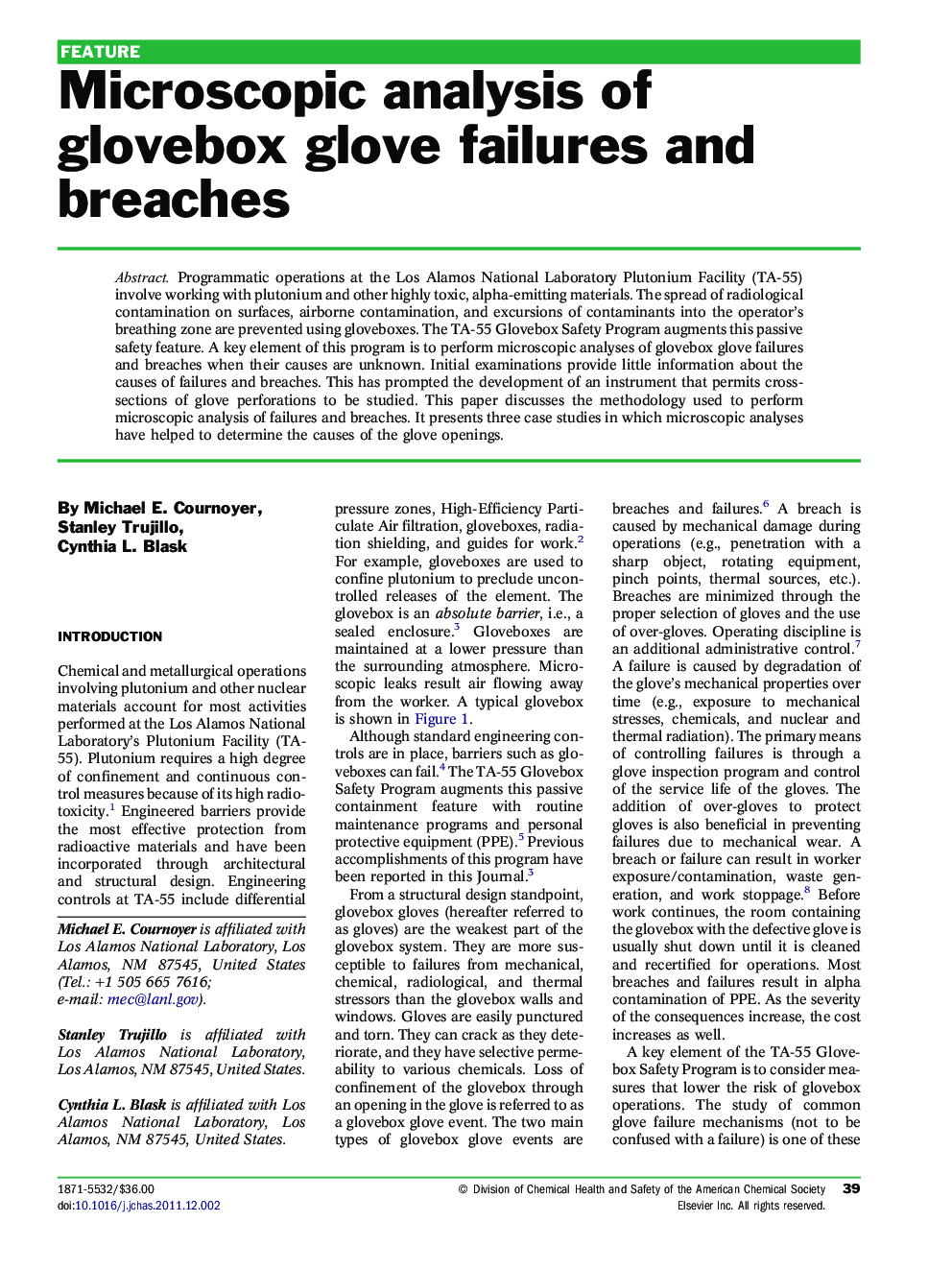| Article ID | Journal | Published Year | Pages | File Type |
|---|---|---|---|---|
| 574497 | Journal of Chemical Health and Safety | 2012 | 8 Pages |
Abstract
Programmatic operations at the Los Alamos National Laboratory Plutonium Facility (TA-55) involve working with plutonium and other highly toxic, alpha-emitting materials. The spread of radiological contamination on surfaces, airborne contamination, and excursions of contaminants into the operator's breathing zone are prevented using gloveboxes. The TA-55 Glovebox Safety Program augments this passive safety feature. A key element of this program is to perform microscopic analyses of glovebox glove failures and breaches when their causes are unknown. Initial examinations provide little information about the causes of failures and breaches. This has prompted the development of an instrument that permits cross-sections of glove perforations to be studied. This paper discusses the methodology used to perform microscopic analysis of failures and breaches. It presents three case studies in which microscopic analyses have helped to determine the causes of the glove openings.
Related Topics
Physical Sciences and Engineering
Chemical Engineering
Chemical Health and Safety
Authors
Michael E. Cournoyer, Stanley Trujillo, Cynthia L. Blask,
